Many people don't truly know how much women have contributed to the field of computing for most of its history. Sometimes they are rendered subordinate, sometimes they are pushed to the background -- and then forgotten. However, thanks to the information age however (made possible by computers), now anyone can look back in time and be amazed at how much women have made possible in computing.
Good afternoon and welcome to the next in my series about women in computing history. This one is interesting because this woman, as a Rear Admiral in the United States Navy, is also technically part of my series about the history of women at war. Let's learn about her today.
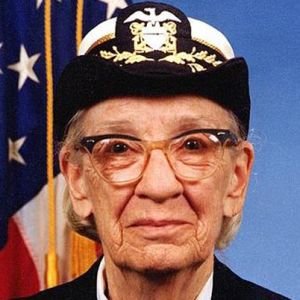
In the beginning, there was an alarm clock. And a small canoe. With a sail on it.
However, even beginnings have roots. Those roots were in turn-of-the-century New York. Her parents were Walter Fletcher Murray and Mary Campbell Horne Murray, her father the insurance broker and statistician (himself also the son of an insurance broker), her mother the house-wife who studied math for fun. Obviously, in this case, it ran in the family. Roots.
At this point in time, the world was a very different place from the one Grace Hopper would change. The First World War was still more than a decade in the future, cars were smoky messy and strange new things far inferior to the time-tested horse and carriage, TV didn't exist and computers? Hahahahaha.
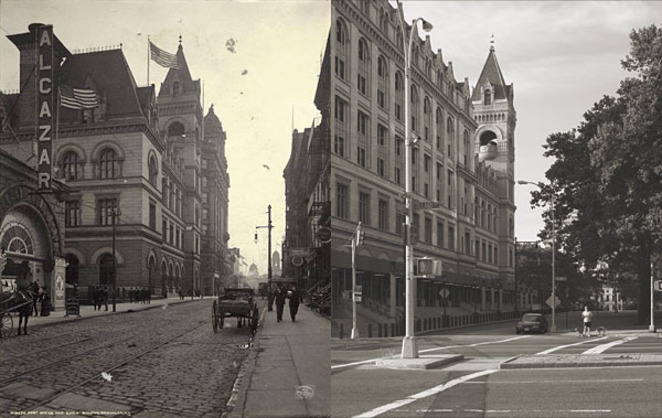
In any case, in 1906, unto this happy couple, a child was born, as children usually are. She was the first of three, the second a sister named Mary and the third a brother, Roger. In 1906, specifically in New York, despite the decades of suffragist struggle, women still did not have the right and would not have the right to vote for another ... 11 years. No matter, this makes it even more most notable that young Grace and her siblings were raised in a manner ahead of their time that even many modern parents would fail to do today. They were all raised to know how to do practical things like how to sew, how to cook, how to grow a garden and more and yet the girls were permitted to play with toys like construction sets and whatever existed before the invention of Lego.
It was a happy childhood. The family had a cottage in New Hampshire where they went for vacations and where the kids were held loosely to the home and permitted to roam far and wide. Grace in particular thrived under this upbringing and, in 1913, her talents were first revealed.
And so we come to the beginning: the alarm clock and the little sail boat.
Grace Murray Hopper was an inquisitive and technically minded child, raised in a family that encouraged both of those traits. What a combination. There came a time when she sailed her little sailboat out on the water within sight of land under her mother's watchful eye. Then the wind capsized her and her sail-canoe tipped over with her in it. A different child and a different parent would have had a different reaction, probably a lot of screaming for help and calling for police and fire and helicopter on the cellphone. In this instance in the 1910s? Her mom simply used her megaphone to shout "Remember your great-grandfather, the admiral!" With that encouragement, young Grace was able to struggle against the water and the wind and the boat to wrestle herself back to the shore.

It was the alarm clock incident that was the real sign though. One day in 1913, young Grace took it into her head that she wished to know how an alarm clock work. And so, with gimlet eye and tools in hand, the seven-year-old disassembled her alarm clock only to find she could not put it back together. Hmm. What to do.
So she grabbed another alarm clock and took it apart. Uh-oh.
So she grabbed another and another, seven in all before her mother stopped and basically said, no, if you're going to do that kind of experimentation in this house, young lady, you will choose one clock and stick to it. It is not really clear why they had so many alarm clocks in their house but no wahala sha. Let us continue.
Humans are allergic to change. They love to say, 'We've always done it this way.' I try to fight that. That's why I have a clock on my wall that runs counter-clockwise.
Time passed, fruitfully. The girl grew academically and in age as well. She attended Schoonmakers School in New York, excelling in class and playing many sports such as field hockey and water polo, despite her small size. Strategies from basketball in particular would even eventually become useful to her in computing when she got to that stage. Before that however, she applied to Vassar, a very prestigious all-girl university of the time at age 16 sef. She scored highly on all their required subjects except unfortunately Latin. It scarcely matter, a year after that (which she spent playing basketball and doing college prep courses) she succeeded and entered Vassar anyway, like a boss in 1924. There she studied maths, physics and engineering as well as play more basketball.
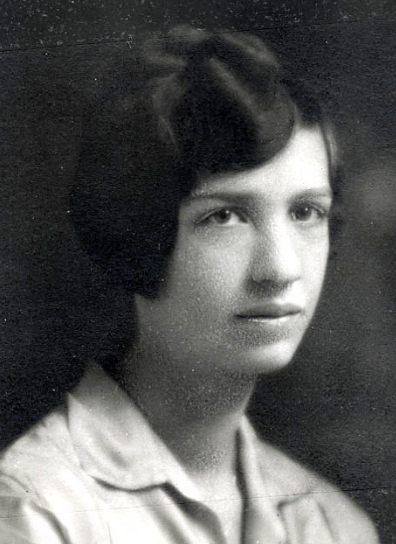
It was also at Vassar that she got her first taste of teaching and found it sweet, finding much benefit in being able to do practical demonstrations to help the understanding of theory.
Vassar was followed by a master's degree at Yale -- and by marriage to Vincent Hopper, the bearer of the last name she would keep till the end of her days. He was a Princeton graduate; an academic whiz like her but, unlike her, he specialized in English and literature, not the sciences. They say opposites attract, right? She then paid for a PHD still at Yale -- by teaching at Vassar again like a boss and eventually even got to be a professor.
Then World War II happened.
When I walked in and saw that monster, I was scared to death!
A lot of people know how hugely influential World War II was and still is on the future that we now live in. A lot of people don't. Those that don't have failed to see that rockets in space? Radar? Blood transfusions? Plastic? Mass production of penicillin?
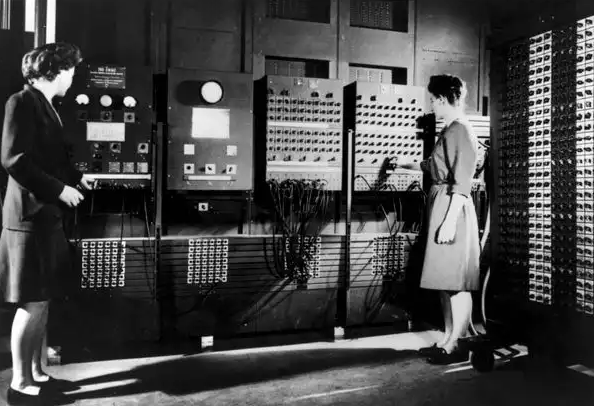
The need to coordinate huge amounts of weapons and material, the need to create codes the enemy couldn't break and even more importantly, the need to break the enemy's codes as quickly as possible --- more than anything else, this drove the rapid development of the computer field during World War II. This is where Grace Hopper entered the picture.
When the war started, she had by this point become an associate professor at Vassar (this same Vassar, o boy she really loved that school ni yen) When America joined the war, given her admiration of her great-grandfather the admiral, she immediately attempted to join the Navy to join in the war effort. However, remember her small size from her sports endeavours? Add that to her being 34 and it turned out the military was less ... accepting. As such, she had to settle for the Naval Reserve in 1941.
Around this time, she and her husband separated. The reasons are between the two of them.
That was fine. Her particular talents soon made her far more useful than just another pair of hands loading a cannon on a ship. Her comprehensive background in maths and statistics and physics gave her the perfect background for calculating firing angles and so on. It also made her perfect for the new team working on building the first successful computer to actually be used in the war effort.
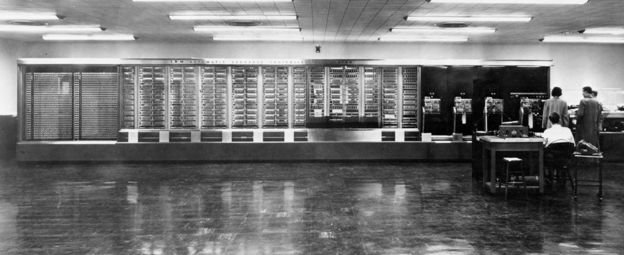
Like most machines of that era, it was huge. More than 50 feet long and filled with 850 kilometers of wiring, the Harvard Mark 1 was a primitive machine that was controlled by a huge roll of tape with holes punched in it and had to be programmed in actual binary code. This meant actually physically programming it by shifting dozens of switches on and off and punching very specific holes in the paper tape, like playing draft with with all the stones on a beach.
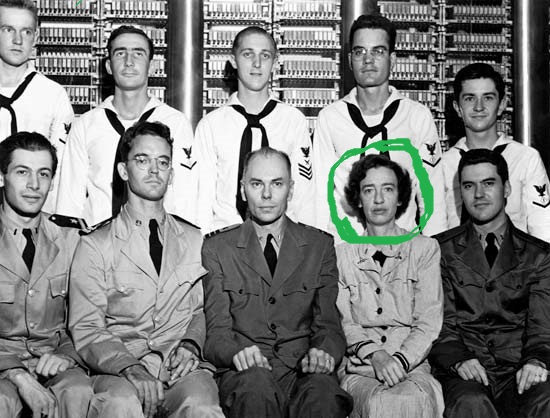
Grace Hopper was brought in and promptly began to make sense of the thing, even ending up writing the operating manual. Her, not the guy who built it. She proceeded to do just that. It was a grinding plodding job with many false starts and trials and errors. It is even the reason for the existence of the terms "computer bug" and "debugging." She did that.
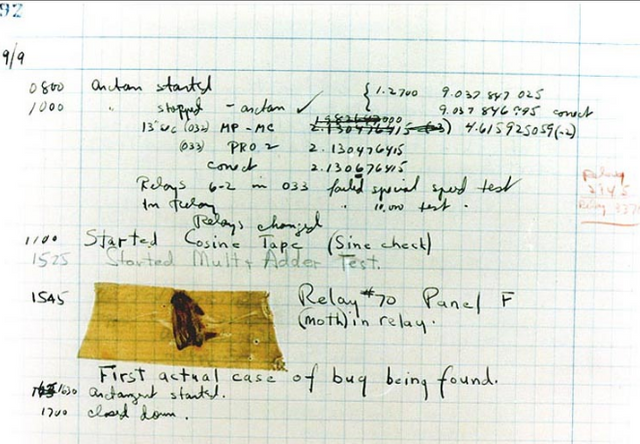
Also, unknown even to her and Aiken, the Mark 1's calculations were used to help solve the math problems involved in the Manhattan Project (i.e. the creation of the first nuclear bomb)
The glass is neither half empty nor half full. It's simply larger than it needs to be. It is easier to get forgiveness than permission
The war ended but Grace Murray Hopper's career was just getting started. From the Harvard Mark 1, she moved on to the Mark II and Mark III until 1949 when she transitioned from working with computers in the Navy to working with computers in private industry. Specifically, with the company that created UNIVAC (the junior brother/descendant of ENIAC AND EDVAC) It was while working with EDVAC that Grace Hopper had the moment of genius that would truly make her a legend in the computing field.
It has been mentioned earlier how computers of that era were programmed, a slow meticulous mistake-prone process involving numerous switches being turned on and off to create binary code instructions and great big loops of paper tape and mechanisms so big yet so delicate that a common insect could fly inside and spoil the show. Hopper decided there had to be a better way. What she came up with was something truly great.
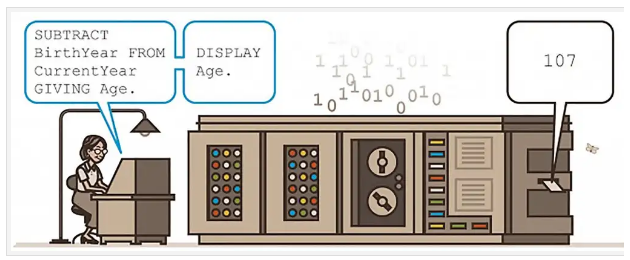
The simple but profound realization she made was that this slow way was so difficult because humans think in human language not in computer language. Therefore, there must be a way to create a go-between that can take commands written in English and translate them into machine language that the computer can understand and vice versa. This would make it possible for a lot more people to join into the computer field, make it easier to use and to write programs for.
She managed this but even this early compiler was still very hard to use. Some guys from MIT came up with an easier one in 1954 that used mathematical symbols and gave her a new direction to explore. The science of compilers began to advance, helping the computer industry as a whole. But it wasn't enough.
Eventually, Hopper went to IBM and RCA, two of the biggest computer companies of the time and persuaded them to authorize a business language to be used by the whole industry. Between that and her military contacts, they were able to make this happen and so COBOL was born. With commands like GO TO and ACCEPT, suddenly a new world of possibility had opened in computing. The first true human-friendly computer language.
I am now going to make you a gift that will stay with you the rest of your life. For the rest of your life, every time you say, "We've always done it that way," my ghost will appear and haunt you for twenty-four hours.
She officially retired from the Navy in 1966 but that ended being too boring and besides her skills were still very much in demand. A hacker of her age is a rare thing to say but she was merely going from strength to strength. She rejoined the Navy and resumed her advancements of the compute field. By this point, many more human-friendly computer languages were starting to show up so she was called in to apply her experience to help translate between them and unify them. This and many other projects, while collecting accolades and awards casually, took her till 1986 when she retired again, this time as the oldest serving personnel in the American armed forces. Also, she had gotten the rank of Admiral by that time.
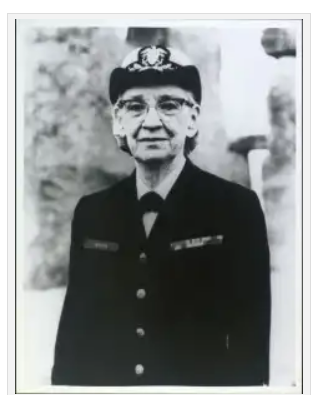
Then she got bored again and went back again, continuing to work in the computer field and give speeches and just generally be amazing. She received more awards including the National Medal of Technology and too many honorary degrees from various universities to bother counting.
Eventually, of course, she died as people will always do. She died, having transformed computer languages from that of humans talking like machines to that of machines talking like humans. She died, having shepherded the computer industry from vacuum tubes all the way to the first real Pentium chips. She died ... a legend.

REFERENCES
http://vcencyclopedia.vassar.edu/alumni/grace-murray-hopper.html - Vassar Encyclopedia Entry on Grace Murray Hopper
http://ethw.org/Grace_Murray_Hopper - Engineering and Technology History Wiki
http://www.computerhistory.org/revolution/birth-of-the-computer/4/78 - Birth of the Computer: ENIAC
http://www.bbc.com/news/business-38677721 - Grace Hopper's compiler: Computing's hidden hero
https://www.wired.com/2013/12/googles-doodle-honors-grace-hopper-and-entomology/ - Google Doodle Honors Grace Hopper and Entomology

For more in this series:
Part One - Lady Ada Lovelace, first lady of computing
Part Two - Hedy Lamarr, the cool aunt of wifi and bluetooth who also managed to be a superstar actress in the process
Part Three - Henrietta Swan Leavitt, the unsung heroine who heard no songs but measured the stars themselves.
For my other series about the (lost) history of women at war:
Part One - The Lethal Lyudmila Pavlichenko
Part Two - The Formidable Nancy Wake
Part Three - The Aviator Hanna Reitsch




Sincerely,
@madmaxfury
I enjoyed this. Thanks for the Expository
Downvoting a post can decrease pending rewards and make it less visible. Common reasons:
Submit
Thanks @jou for wonderful time
Downvoting a post can decrease pending rewards and make it less visible. Common reasons:
Submit
This is an amazing tale of passion, hardwork and persistence in the face of overwhelming social odds. A true legend. Thanks for sharing.
Downvoting a post can decrease pending rewards and make it less visible. Common reasons:
Submit
Thanks sir
Downvoting a post can decrease pending rewards and make it less visible. Common reasons:
Submit
In our history as human, we've come a long way in recognising the equality of women. This is indeed a well researched post.
Downvoting a post can decrease pending rewards and make it less visible. Common reasons:
Submit
Thanks sir... I will do to my possible power in bringing them to ur door step.
Downvoting a post can decrease pending rewards and make it less visible. Common reasons:
Submit